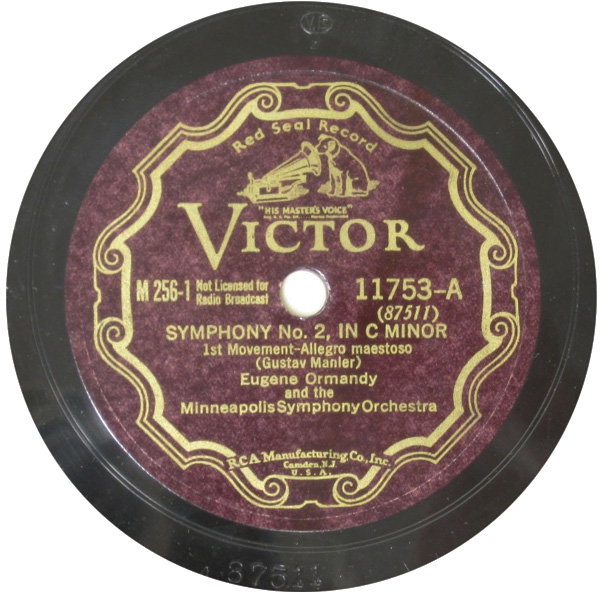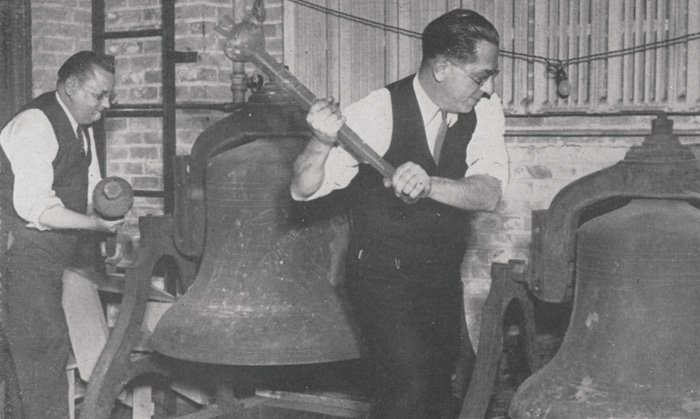The one recording that secured Ormandy's legacy in Minneapolis was the first American recording of Mahler's Symphony no. 2, issued on eleven two-sided 78-rpm discs. One month after a December 1934 concert performance of the work, the 350 singers and augmented orchestra reassembled for a second performance for the Victor engineers before a "pop" concert audience. The symphony was recorded over two days, 6-7 January, at the beginning of the eleven days of recording in 1935. (The recording was reissued by Biddulph on compact disc in 1997.)
Fig. 1: Mahler's symphony requires an offstage ensemble of brass and percussion, and the configuration of Northrop Auditorium made it impossible for the offstage performers to have a clear view of the conductor. The stage crew devised a system of lights activated by a button placed under the foot of the second concertmaster. As he tapped the button in sync with Ormandy's beat, nine lights blinked on and off backstage to guide the players.
Fig. 2: In the last movement of the symphony, Mahler calls for three "deep unpitched" bells. The orchestra management located five bells from the old St. Paul courthouse in a storage garage and had three transferred to Northrop Auditorium. The percussionists struck the bells with sledgehammers.
Which exhibit?
Page: Featured item
Short name for this entry
Mahler's Second
Order on exhibit page
2
Turn off the details link on the exhibit page
On
Exhibit sub-tab

